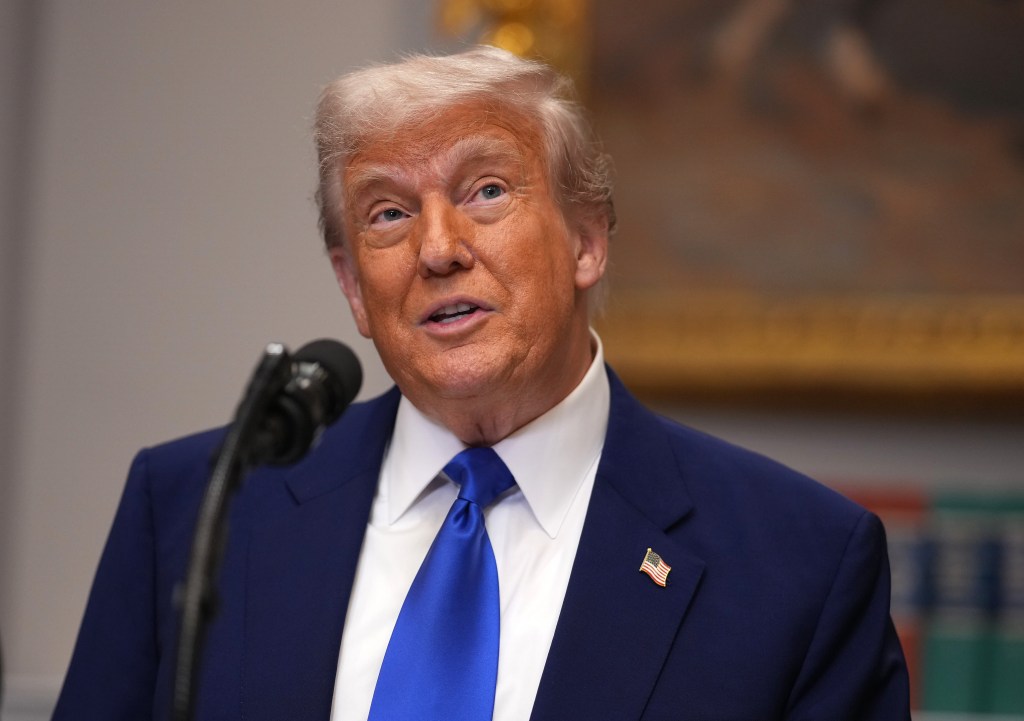
We have reached the beginning of the end of Donald Trump’s tariff experiment.
That, at least, is what professional Washington appears to be forecasting—or is it wishcasting? On Zoom calls and in leadership meetings up and down K Street Monday morning, lobbyists expressed cautious hope that the president may be done with these pesky trade actions soon, perhaps long before the end of the year. As the Wall Street Journal’s James Mackintosh wrote Monday, “It looks like Treasury Secretary Scott Bessent is now in control of trade policy. Put simply, the grown-ups are in the room.”
This restrained jubilance, reflected in Monday’s incredible market rally to pre-Liberation Day levels, comes from what Bessent and the Trump administration announced over the weekend: an agreement between the United States and China to pause, for 90 days, the escalated tariffs between the two countries. That means cutting our tariff rates on Chinese goods to 30 percent, a higher level than before Trump began taking action this year but a massive step down from the 145 percent rate in effect since April 9. China, meanwhile, has dropped its retaliatory tariff rate from 125 percent to 10 percent.
That’s all movement in the right direction for those in Washington who believe Trump’s tariffs are ill-conceived and economically detrimental—which, these days, is pretty much everyone not in the administration or reflexively defensive of it. The downturn in financial markets over the past six weeks and its remarkable reversal as Trump has rolled back significant parts of his tariff policy shows how Wall Street is ready and willing to reward tariff pauses and walkbacks from the administration.
But there are zero signs Trump or his team are ready to embrace trade liberalization and abandon their faith-based belief that the path to long-term economic prosperity is trade protectionism. Despite the developments of this past spring revealing the fundamental error of tariffs as an engine for economic prosperity, the administration is simply scaling back expectations and trying to pick up limited wins in the forms of one-on-one deals.
As with last week’s announced trade deal with the United Kingdom, the result of the negotiations with China is just enough reduction in tariffs to calm markets and avoid the “decoupling” that both countries fear could stop all trade between the two economic giants—but with rates higher than what they were before Trump took office.
The message from the administration has been clear, starting with Bessent’s Monday morning press conference in Geneva, where the two sides had been negotiating. “We concluded that we have shared interests, and we both have an interest in balanced trade,” Bessent said of his Chinese counterparts. That indicates that he and the president remain committed to achieving some defined “balance” in trade as an end in itself, determined by governments and not markets.
Later on Monday, Trump indicated during a press conference at the White House that while he does not expect tariffs on Chinese goods to return to 145 percent, rates could still go up “substantially higher” from the tariff pause rate if Washington and Beijing cannot reach a deal by the end of the 90 days.
“There are zero signs Trump or his team are ready to embrace trade liberalization and abandon their faith-based belief that the path to long-term economic prosperity is trade protectionism.”
Indeed, even the purpose of the press conference—to tout a new executive order aimed at lowering prescription drug prices—reveals how Trump remains convinced that unilateral trade action by the government can achieve positive policy ends. Trump’s legally dubious order demands drug companies lower prices for Americans to be in line with prices charged in other countries, even threatening to institute tariffs on those countries where drugs cost less than they do in the United States.
“If necessary, we’ll investigate the drug companies, and we’ll, in particular, investigate the countries that are doing this, and we will add it onto the price that we charge them for doing business in America,” Trump said. “In other words, we’ll add it onto tariffs if they don’t do what is right, which is, everybody should equalize. Everybody should pay the same price.”
It’s worth repeating the observation that Trump views tariffs as a policy multitool, from jump-starting negotiations to threatening drug companies to generating revenue, and so much more. The temporary pauses and reductions are tactical, not strategic, responses to the immediate political effects of his policies. And despite the hopes and wishes of the business lobby in Washington that Trump may be browbeaten into retreating from his Liberation Day flood of tariffs, domestic manufacturers that rely on international trade aren’t taking any chances.
“I consider myself an optimist,” Sarah LaFleur, the founder and CEO of high-end women’s businesswear retailer M.M. LaFleur, told Bloomberg’s Odd Lots podcast last week. “And yet all these experiences over the past five years, I mean, they have hardened me.”
In the conversation, which was recorded before the announced deal with China, LaFleur said she already has made significant changes to her business—negotiating lowering costs with suppliers, selling in China inventory made in China—in light of the tariffs that won’t be so easy to roll back.
“Everyone’s saying, like, ‘Oh, don’t worry, tariffs are going to come down again, Trump’s not going to actually do it, they’re going to call his bluff,” she said. “It doesn’t matter. The damage has been done. I’ve already cut my costs. Maybe he’ll undo it, but who’s to say he won’t do it again?”
















